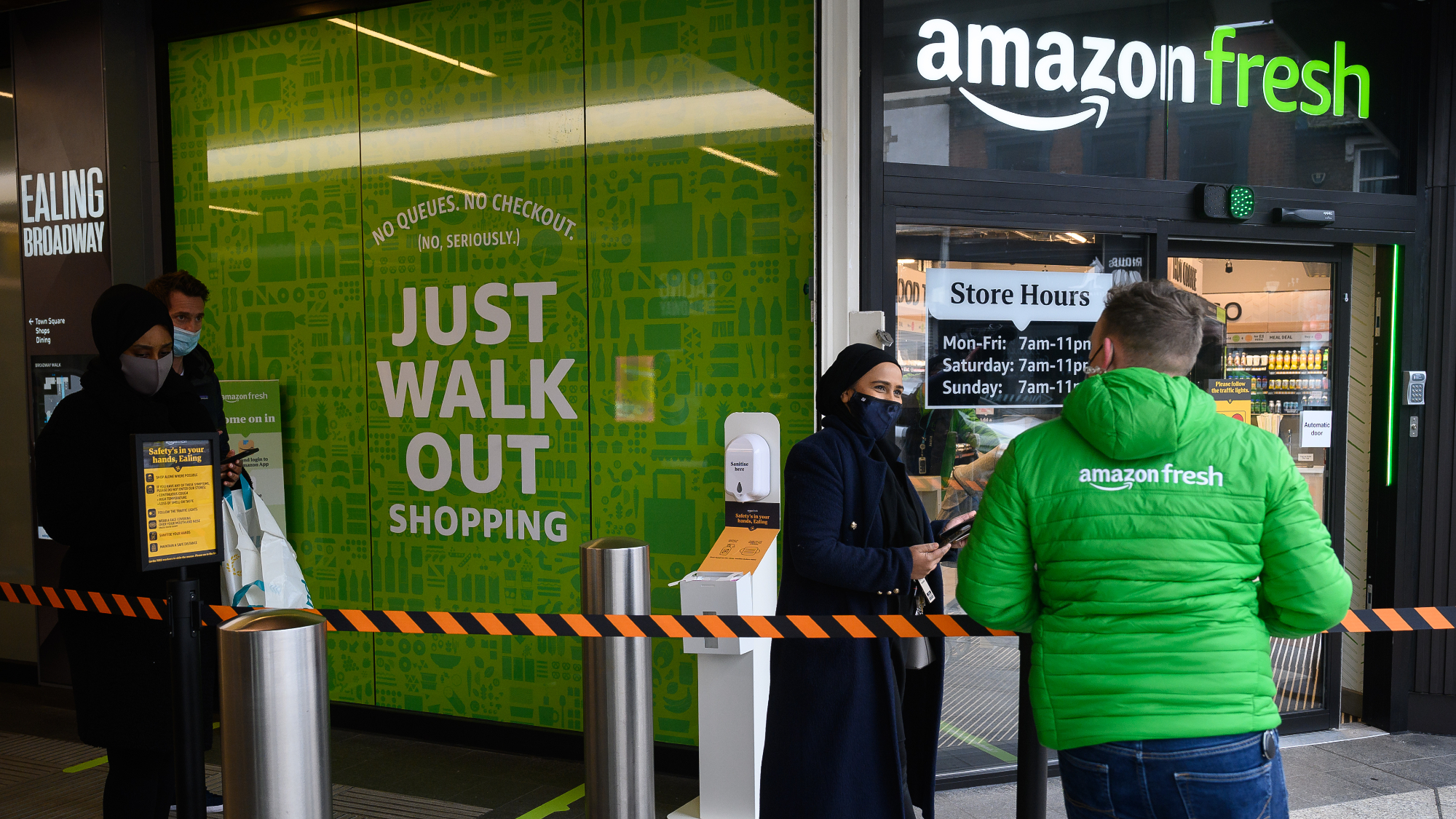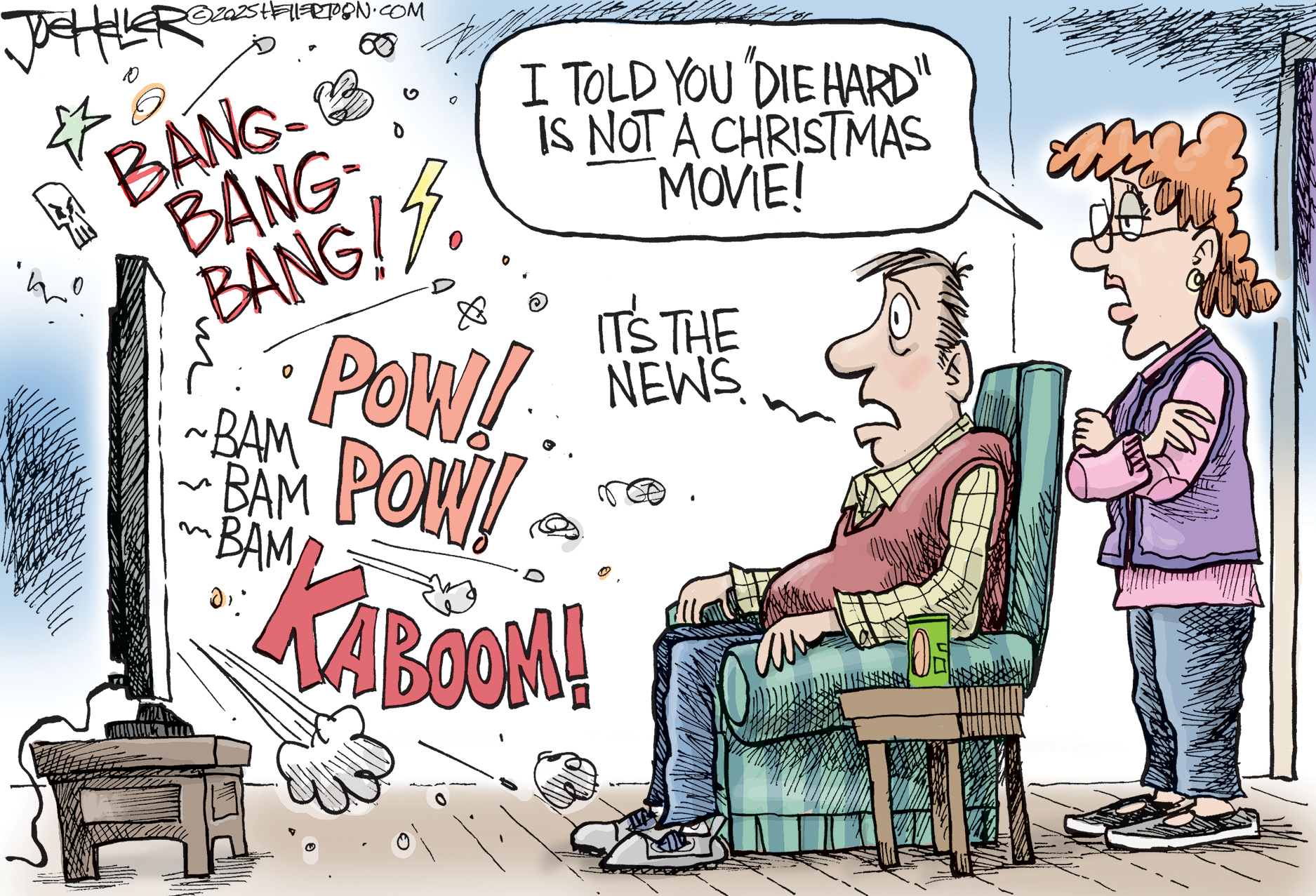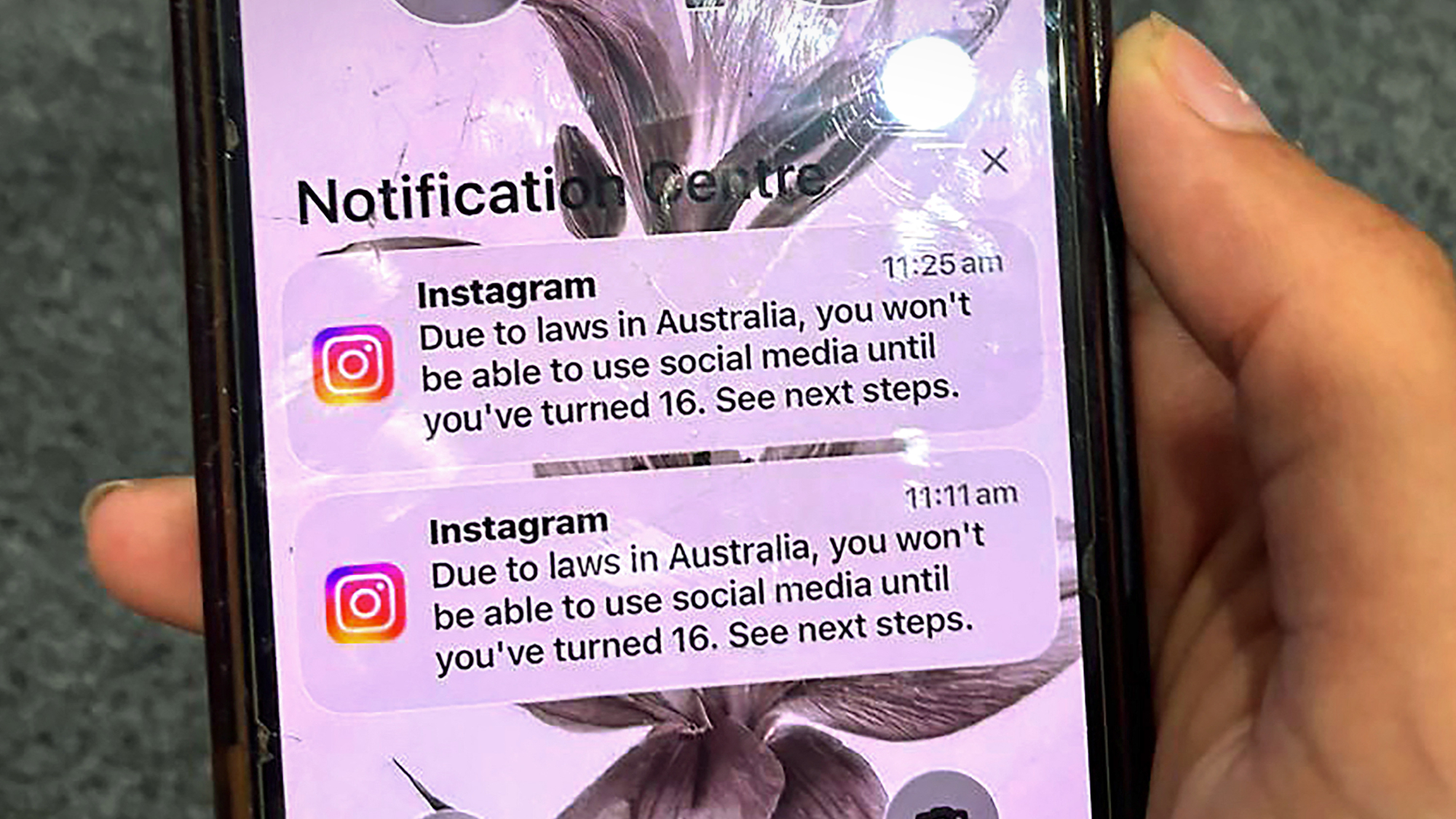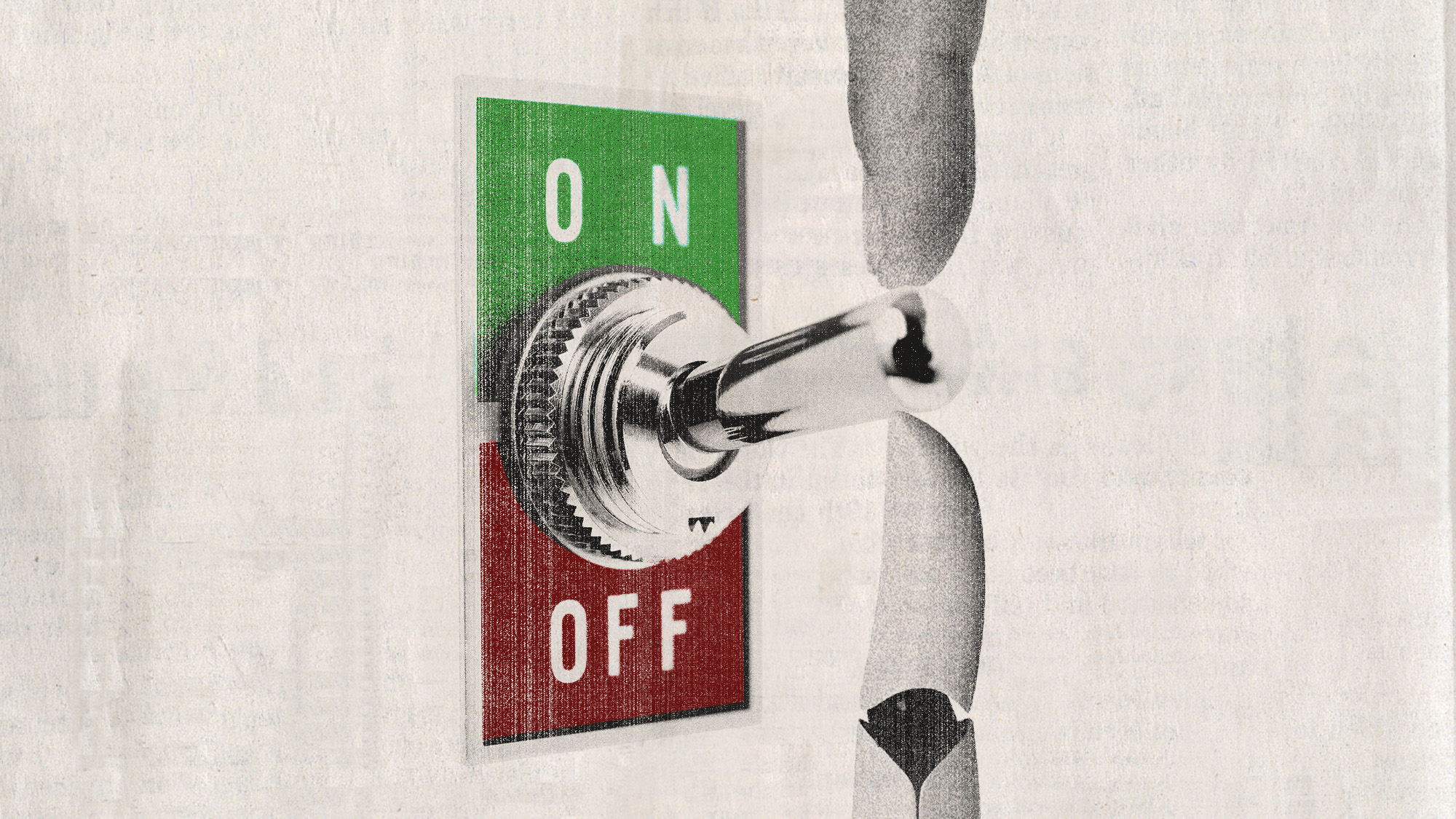Amazon ending 'Just Walk Out' grocery checkout
In its place, the company will let customers scan while they shop with Amazon Dash Cart


What happened?
Amazon will remove its "Just Walk Out" checkout technology at all U.S. Amazon Fresh grocery stores, a company executive told The Information on Tuesday. "Just Walk Out," which uses cameras, shelf sensors and sometimes offsite workers to tally and charge customers for their groceries, was installed at 27 of the 44 U.S. Amazon Fresh stores.
Who said what?
"We're rolling out Amazon Dash Cart, our smart shopping carts" that let shoppers scan items as they put them in the cart, an Amazon spokesperson said to Gizmodo.
The commentary
When "Just Walk Out" debuted in 2016, it was "Amazon's biggest and boldest innovation in grocery shopping," Gizmodo said. But the "stumbles" and the high costs made Amazon less competitive "with food goliaths like Walmart, Costco and Kroger." Dash Carts are "far simpler, probably less error-prone and almost certainly cheaper" than "Just Walk Out," The Verge said.
The Week
Escape your echo chamber. Get the facts behind the news, plus analysis from multiple perspectives.

Sign up for The Week's Free Newsletters
From our morning news briefing to a weekly Good News Newsletter, get the best of The Week delivered directly to your inbox.
From our morning news briefing to a weekly Good News Newsletter, get the best of The Week delivered directly to your inbox.
What next?
Some Amazon Go convenience stores and smaller Amazon Fresh shops in the U.K. will continue using "Just Walk Out," The Wall Street Journal said.
A free daily email with the biggest news stories of the day – and the best features from TheWeek.com
Peter has worked as a news and culture writer and editor at The Week since the site's launch in 2008. He covers politics, world affairs, religion and cultural currents. His journalism career began as a copy editor at a financial newswire and has included editorial positions at The New York Times Magazine, Facts on File, and Oregon State University.
-
 Critics’ choice: The year’s top 10 movies
Critics’ choice: The year’s top 10 moviesFeature ‘One Battle After Another’ and ‘It Was Just an Accident’ stand out
-
 The small Caribbean island courting crypto billions
The small Caribbean island courting crypto billionsUnder the Radar Crypto mogul Olivier Janssens plans to create a libertarian utopia on Nevis
-
 Political cartoons for December 21
Political cartoons for December 21Cartoons Sunday’s political cartoons include Christmas movies, AI sermons, and more
-
 What is Roomba’s legacy after iRobot bankruptcy?
What is Roomba’s legacy after iRobot bankruptcy?In the Spotlight Tariffs and cheaper rivals have displaced the innovative robot company
-
 The robot revolution
The robot revolutionFeature Advances in tech and AI are producing android machine workers. What will that mean for humans?
-
 Australia’s teen social media ban takes effect
Australia’s teen social media ban takes effectSpeed Read Kids under age 16 are now barred from platforms including YouTube, TikTok, Instagram, Facebook, Snapchat and Reddit
-
 Texts from a scammer
Texts from a scammerFeature If you get a puzzling text message from a stranger, you may be the target of ‘pig butchering.’
-
 ‘Deskilling’: a dangerous side effect of AI use
‘Deskilling’: a dangerous side effect of AI useThe explainer Workers are increasingly reliant on the new technology
-
 AI models may be developing a ‘survival drive’
AI models may be developing a ‘survival drive’Under the radar Chatbots are refusing to shut down
-
 Wikipedia: Is ‘neutrality’ still possible?
Wikipedia: Is ‘neutrality’ still possible?Feature Wikipedia struggles to stay neutral as conservatives accuse the site of being left-leaning
-
 How the online world relies on AWS cloud servers
How the online world relies on AWS cloud serversThe Explainer Chaos caused by Monday’s online outage shows that ‘when AWS sneezes, half the internet catches the flu’
